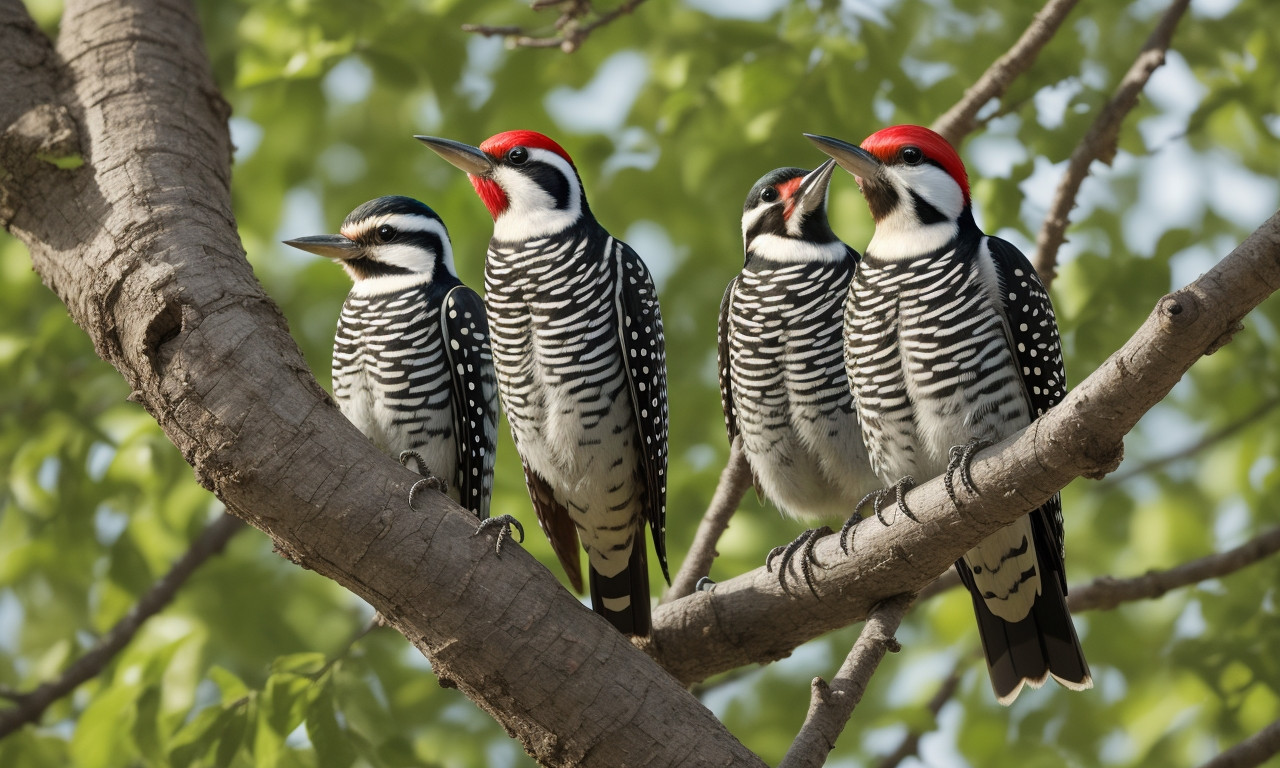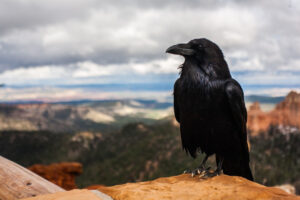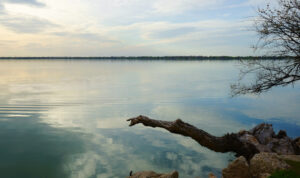Nestled in the sprawling expanse of the American Midwest, Iowa’s woodland reverberates with a rhythmic percussion that is as enchanting as it is distinctive. The majestic woodpeckers of Iowa are the virtuosos behind these forest symphonies, and their presence is a tapestry woven into the very heart of the Heartland’s forests. These avian craftsmen are not merely birds but storytellers, engineers, and integral pieces of the ecological jigsaw that define Iowa’s rich natural heritage.
The wondrous world of woodpeckers in Iowa is a microcosm ripe for exploration. With each tap and drum, they unravel nature’s mysteries and invite onlookers to delve into their secret lives. In this deep dive, we invite you to join us in uncovering the rhythms of these vibrant creatures, to understand their habits, their roles in the ecosystem, and the intrinsic beauty that they contribute to Iowa’s countryside.
The Intricate Lives of Iowan Woodpeckers
Who Are Iowa’s Woodworkers?
The woodpecker family is a robust ensemble, each member carrying its own unique tune. In Iowa, the Downy Woodpecker is often the most familiar sight, with its gentle tap-tap-tapping serving as a delicate backdrop to rural and suburban areas alike. Not to be outshone, the striking Pileated Woodpecker is like the opera singer of the woods, its powerful knocks reverberating through the densest of forests, revealing its presence even when hidden by the thickest foliage.
Related article; illinois hawk
Each species fills a niche, from the Red-headed Woodpecker with its fiery cap, to the elusive Yellow-bellied Sapsucker whose penchant for tree sap distinguishes its diet. These are but a few of the cast members in this ongoing woodland performance.
Related article; hawks of oklahoma
Daily Rhythms: Behavior and Habitat
Intricately carved tree cavities tell the story of woodpeckers’ tireless work. A myriad of habitats, ranging from deciduous woods to riverine forests, serve as their sanctuaries and workshops. These birds are not mere residents of their environments but active participants in shaping them.
Related article; sparrows in michigan
Their daily routines involve foraging for insects hidden beneath bark, excavating nest cavities, and in certain seasons, engaging in a resonant display of drumming to attract mates and establish territories. The drumming, while musical to human ears, is a serious endeavor for woodpeckers, and each rhythm articulates a different message within their community.
Related article; hawks of virginia
The Architectural Prowess of Their Nests
Woodpecker nests are marvels of natural architecture. These birds employ remarkable precision and indefatigable dedication to craft their homes. The physical resilience required to chisel into hardwoods is immense, and woodpeckers are uniquely equipped for such a task, with their reinforced skull structures and chisel-like beaks.
The nesting cavities also contribute to the ecosystem, as they become shelters for other species once their architects move on. This act of inadvertent generosity underscores the woodpeckers’ role in enhancing biodiversity.
Related article; hawks in az
Courtship and Reproduction
During mating season, the crescendo of courtship rituals becomes a spectacle of aerial displays and percussive performances. Males, and sometimes females, drum with gusto to lure potential mates. This display of prowess is a critical part of their reproductive cycle and ensures the continuity of their life rhythms within the forests.
Related article; florida falcons birds
The Conservation Symphony: Challenges and Solutions
Despite the idyllic portrayal of their lives, woodpeckers face numerous challenges, both natural and human-induced. Habitat loss, climate change, and competition for nesting sites all threaten the harmonious existence of these birds. Yet, conservation efforts provide a beacon of hope.
Related article; hawks of new mexico
Battling Habitat Loss
With urban expansion and agricultural intensification, prime woodpecker real estate is dwindling. Conserving woodland and establishing protective legislations are imperative to ensure these birds have the environment they need to thrive.
Related article; maine ducks
Pesticides and the Food Web
The use of pesticides in farming and forestry can disrupt the delicate balance of the food web. As woodpeckers largely feed on insects, these toxic substances can have direct and indirect effects on their health and food sources.
Engaging with Citizen Science
Engaging the public through citizen science programs empowers locals to take active roles in monitoring and protecting woodpecker populations. Reporting sightings and participating in bird counts contributes valuable data that helps shape conservation strategies.
The Drumbeat of Education and Awareness
Learning to Listen to the Woods
To foster a deeper appreciation for Iowa’s woodpeckers, one must learn to listen. Each knock and drum encodes information, and by understanding bird language, we can connect with these birds on a profound level.
The Role of Nature Centers and Workshops
Nature centers and workshops are vital in offering education about the value of woodpeckers and their conservation. Through interactive sessions and guided walks, the public can become acquainted with the intricate details of woodpecker biology and behavior.
Integrating Woodpecker Wisdom into Conservation
Education can translate into conservation action. By raising awareness about the importance of woodpeckers, people are more likely to support policies and initiatives that work towards their protection.
The Future of Iowa’s Woodpeckers: An Ongoing Narrative
As the world changes, so too must our approach to ensuring the survival of these incredible birds. The future of Iowa’s woodpeckers is not written in stone, but in the living wood of the trees they call home. With continued research, conservation, and a collective commitment to their protection, we can ensure that the rhythm of the woodpeckers remains a steadfast pulse in the heart of Iowa’s forests.
Continuing Conservation Research
Understanding habitat requirements and the impact of environmental changes on woodpecker populations is crucial. Ongoing research informs effective management practices and conservation strategies.
Adapting to Climate Change
As climate patterns shift, so too will the habitats and behaviors of woodpeckers. Proactive measures to mitigate these effects and to secure their adaptability are of paramount importance.
Maintaining the Balance: Humans and Woodpeckers
Humans play a pivotal role in the conservation narrative. With mindful development and sustainable practices, we can coexist with these birds without compromising their habitats or the ecological services they provide.
Iowa’s woodpeckers are not simply birds; they are symbols of resilience, ecological importance, and natural beauty. Their drumming is the heartbeat of the Heartland’s forests, an enduring rhythm that signals the health and vibrancy of these rich ecosystems. As custodians of this land, it falls upon us to ensure that these rhythms continue, uninterrupted, for generations to come. The narratives of Iowa’s woodpeckers are irrevocably interwoven with our own, and it is our shared duty to listen, learn, and act to preserve the enchanting symphony of life that resonates through the trees.




